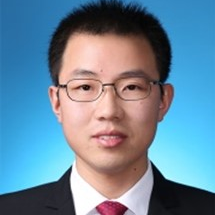Advanced (Citius, Minor, Simplicius) Laser Fabrication Technologies for Cross-Field Applications
A special issue of Micromachines (ISSN 2072-666X). This special issue belongs to the section "D3: 3D Printing and Additive Manufacturing".
Deadline for manuscript submissions: closed (31 January 2023) | Viewed by 15462

Special Issue Editors
Interests: ultrafast laser fabrication; micro/nano optics; hard material photonic devices
Special Issues, Collections and Topics in MDPI journals
Interests: 3D waveguide photonic integrated circuit; femtosecond laser processing
Special Issues, Collections and Topics in MDPI journals
Interests: micro/nano robotics; laser fabrication; multi-field coupling manipulation
Special Issues, Collections and Topics in MDPI journals
Interests: laser fabrication for biomimetics; laser-matter interactions; micro/nano-optics
Special Issues, Collections and Topics in MDPI journals
Interests: nanofabrication; nanophotonics; micro-optics; 3D laser fabrication (additive and subtractive); ablation; light-matter interaction; solar hydrogen
Special Issues, Collections and Topics in MDPI journals
Special Issue Information
Dear Colleagues,
The field of ultra-short pulsed lasers has shown a doubling of average power every two years in this century, which is in line with Moore’s law in microelectronics for the number of transistors on a chip. Photons packed in time (average power) are expected to drive high-throughput industrial applications. This recent trend in laser development at short and longer pulse durations calls for the development of new tools for energy delivery and handling, and to better understand light–matter interactions occurring at high power/intensity simultaneously with high beam/sample scanning speeds. It is a good example of fundamental research directly related to industrial applications (fast fabrication throughputs at high resolution).
Laser fabrication technology has been widely used both in industry and academia in the past decade, including additive, subtractive, and modification manufacturing. In particular, laser fabrication helps to overcome the limitations of traditional manufacturing and meets the needs of 3D complex geometry fabrication and high-precision fabrication. Recently, many advanced laser fabrication technologies have been proposed to satisfy the stringent requirement for the micro/nano processing of advanced functional materials, making them faster, smaller, simpler (following the Olympic motto: Citius, Minor, Simplicius [Latin]). In addition, researchers have made great efforts to promote the development of laser fabrication in novel applications.
This Special Issue aims to highlight the latest developments in advanced laser fabrication technologies and novelty applications such as micro/nano-optics, photonic integrated circuits, micro/nano-robotics, etc., with development towards green energy and bio-medical fields for the strongest societal impact.
Potential topics include, but are not limited to:
- Etching (plasma, wet bath) assisted laser fabrication technology.
- Laser processing technology with light field modulation (far-field (Gaussian, Bessel), near-field).
- Laser-induced micro/nanostructures.
- 3D/4D printing based on the laser fabrication technique.
- Creation of new materials and composites on interfaces of photo-electrode sensor surfaces by controlled phase transitions.
- Materials for green energy applications (solar cell patterning, hydrogen-producing photo-electrodes, batteries, fuel cells).
We seek submissions where the cross-disciplinary use of different fabrication techniques are combined, especially where such combination opens new applications in bio-medical, environmental sensor, green energy, photo-/electro-catalysis, and battery applications.
Dr. Xueqing Liu
Dr. Zhennan Tian
Dr. Bing Han
Dr. Lei Wang
Prof. Dr. Saulius Juodkazis
Guest Editors
Manuscript Submission Information
Manuscripts should be submitted online at www.mdpi.com by registering and logging in to this website. Once you are registered, click here to go to the submission form. Manuscripts can be submitted until the deadline. All submissions that pass pre-check are peer-reviewed. Accepted papers will be published continuously in the journal (as soon as accepted) and will be listed together on the special issue website. Research articles, review articles as well as short communications are invited. For planned papers, a title and short abstract (about 100 words) can be sent to the Editorial Office for announcement on this website.
Submitted manuscripts should not have been published previously, nor be under consideration for publication elsewhere (except conference proceedings papers). All manuscripts are thoroughly refereed through a single-blind peer-review process. A guide for authors and other relevant information for submission of manuscripts is available on the Instructions for Authors page. Micromachines is an international peer-reviewed open access monthly journal published by MDPI.
Please visit the Instructions for Authors page before submitting a manuscript. The Article Processing Charge (APC) for publication in this open access journal is 2600 CHF (Swiss Francs). Submitted papers should be well formatted and use good English. Authors may use MDPI's English editing service prior to publication or during author revisions.
Keywords
- laser fabrication
- micro/nano optics
- micro/nano robots
- functional devices










